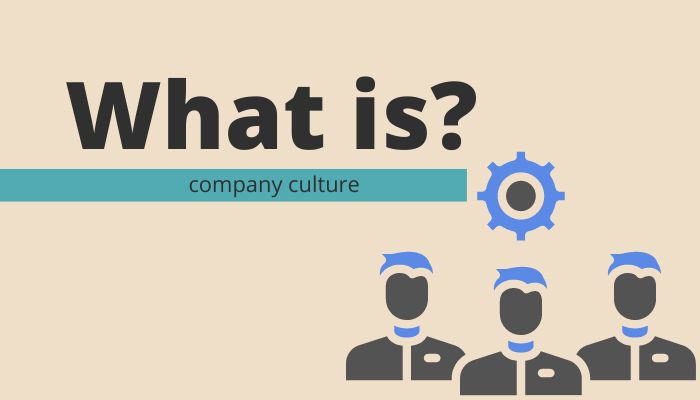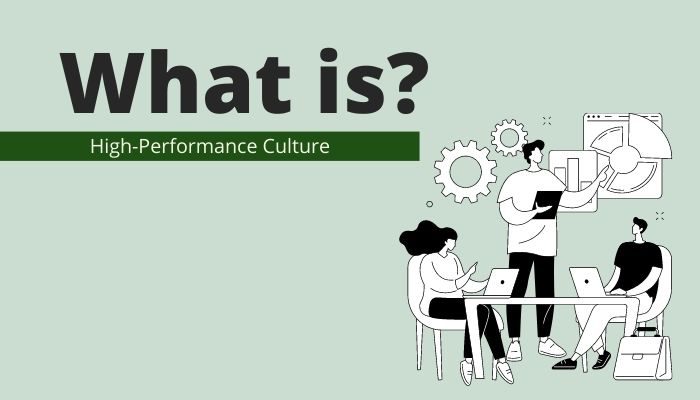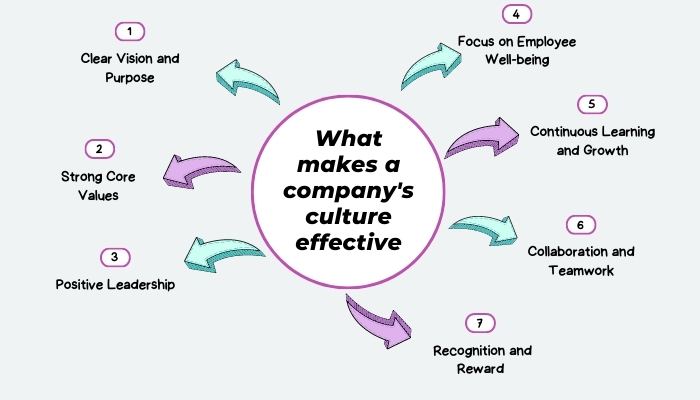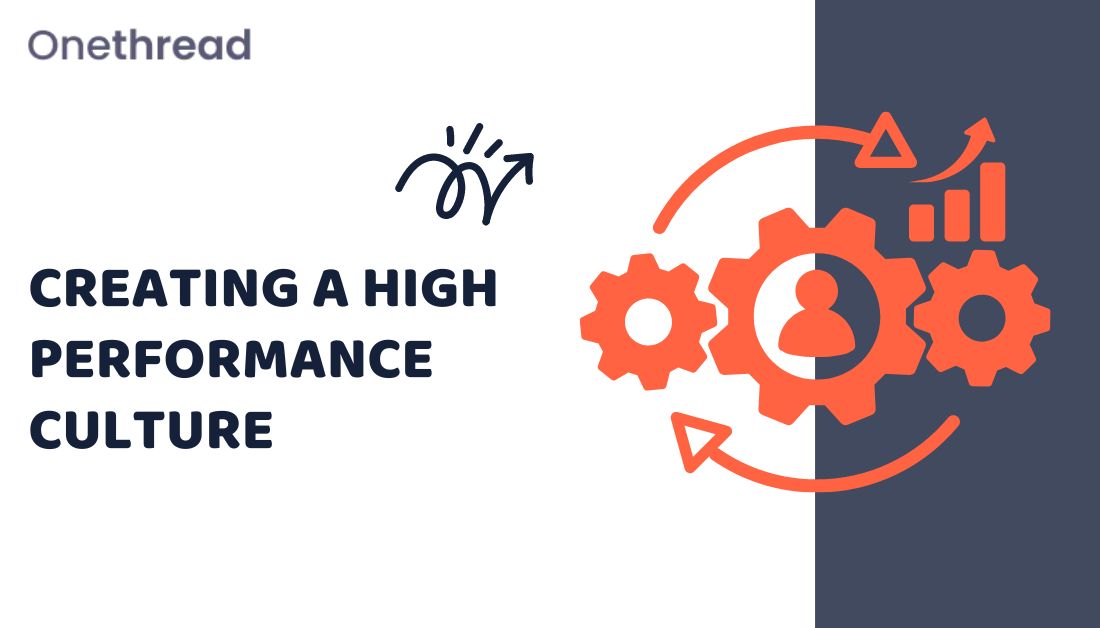Creating a High Performance Culture: All You Need to Know
Companies constantly strive to gain a competitive edge in today’s competitive business landscape. They invest in cutting-edge technology, develop innovative strategies, and recruit top talent. However, company culture is one crucial element that often gets overlooked but significantly impacts an organization’s success.
Company culture is the collective values, beliefs, attitudes, and behaviors that define how people interact and work together within an organization. The intangible fabric shapes the overall work environment and influences employee engagement, productivity, and, ultimately, the company’s performance.
A high-performance culture takes this concept a step further. It is a culture that fosters excellence, encourages innovation, and drives results. It is a culture that motivates employees to go above and beyond, to improve continuously, and to achieve exceptional outcomes.
This article will explore what makes a company’s culture effective and how organizations can create a high-performance culture that sets them apart from the competition. By understanding the key qualities of such a culture and implementing strategies to cultivate it, companies can unlock the full potential of their workforce and achieve sustainable success.
What is company culture?
Company culture is the essence that defines an organization’s identity and character. It encompasses the shared values, beliefs, norms, traditions, and behaviors that shape the work environment and guide how employees interact with one another.

It is like the DNA of a company, influencing every aspect of its operations, decision-making processes, and relationships.
Company culture is not something that can be created over time and imposed from the top down. It develops organically through the collective experiences, actions, and attitudes of the people within the organization. The leadership, the employees, and the overall work environment shape it.
At its core, company culture reflects its mission, vision, and core values. It sets the tone for how work is approached, how decisions are made, and how people are treated. A strong and positive company culture aligns employees around a common purpose, fosters a sense of belonging and pride, and creates a supportive and engaging workplace.
Company culture influences employee morale, satisfaction, and productivity. Employees who feel connected to the company’s values and mission are more motivated, engaged, and committed to their work. It also impacts how customers perceive the company, as a culture often permeates through interactions with clients and stakeholders.
Understanding and nurturing company culture is essential for organizations aiming to build a strong foundation for success. It sets the stage for attracting and retaining top talent, fostering innovation, and driving long-term growth. However, to achieve exceptional results, companies must go beyond having a positive culture and strive for a high-performance culture, which we will explore in the next section.
What Is High-Performance Culture?
A high-performance culture refers to a work environment where employees consistently deliver exceptional results and strive for excellence. It is characterized by shared values, behaviors, and practices that drive individual and collective performance.

In a high-performance culture, employees are motivated, engaged, and empowered to reach their full potential. This culture promotes a strong work ethic, continuous learning, collaboration, and accountability.
It encourages employees to set ambitious goals, pursue innovation, and adapt to changing circumstances. A high-performance culture fosters a sense of pride, satisfaction, and fulfillment among employees, resulting in improved productivity, customer satisfaction, and overall organizational success.
Organisational Culture and its Impact on Productivity
A high-performance company culture is essential for the success and growth of an organization. It sets the foundation for a positive work environment, fosters employee engagement, and drives productivity. A high-performance company culture is vital for achieving organizational success.
It drives employee engagement, productivity, innovation, and collaboration while attracting and retaining top talent. By prioritizing a positive culture; organizations create an environment where employees can thrive, resulting in long-term growth and excellence.
What makes a company’s culture effective
Company culture shapes an organization’s overall success, performance, and identity. Effective company culture goes beyond superficial perks and extends to the core values, beliefs, and behaviors that guide employees’ actions. Let’s explore the key elements that contribute to making a company’s culture effective.

1. Clear Vision and Purpose
Effective company culture starts with a clear and compelling vision that defines the organization’s purpose and direction. It provides a sense of meaning and inspires employees to work towards common goals. A well-defined vision aligns the efforts of individuals, creating a unified sense of purpose that drives the organization forward.
2. Strong Core Values
Core values are the guiding principles that shape behavior and decision-making within an organization. These values reflect the desired culture and serve as a moral compass for employees.
When core values are communicated, embraced, and practiced by all levels of the organization, they establish a consistent and ethical framework that guides actions and promotes a positive work environment.
2.1 Alignment with Mission
The core values of a company should align with its mission and goals. When the values are directly connected to the purpose and objectives of the organization, they provide a cohesive framework for decision-making and reinforce the desired culture.
2.2 Employee Empowerment
An effective culture empowers employees to embody and live the core values. It encourages individuals to take ownership, make decisions aligned with the values, and act as ambassadors for the culture. Empowered employees are more engaged, motivated, and committed to upholding the organization’s values.
3. Positive Leadership
Leadership plays a pivotal role in shaping a company’s culture. Effective leaders embody the values and behaviors they expect from employees. They set the tone by promoting transparency, trust, open communication, and accountability. Positive leadership fosters an environment where employees feel supported, valued, and inspired to contribute their best.
3.1 Leading by Example
Leaders who lead by example and consistently demonstrate the desired behaviors create a culture of trust and integrity. When leaders walk the talk inspire employees to emulate those behaviors and contribute to a positive and effective culture.
3.2 Communication and Transparency
Transparent and open communication is crucial for an effective culture. Leaders who communicate openly, listen to their employees and provide regular feedback create an environment of trust and collaboration. Transparent communication promotes clarity, reduces misunderstandings, and strengthens employee engagement.
4. Focus on Employee Well-being
A culture that prioritizes employee well-being fosters a positive work environment and promotes overall satisfaction and productivity. This includes initiatives such as work-life balance, wellness programs, professional development opportunities, and recognition for achievements.
Employees who feel supported and valued are more likely to be engaged and contribute to the organization’s success.
5. Continuous Learning and Growth
An effective culture encourages continuous learning and personal growth. It provides opportunities for employees to develop their skills, acquire new knowledge, and advance in their careers. A learning-oriented culture supports innovation and adaptability, and empowers employees to reach their full potential.
6. Collaboration and Teamwork
Collaboration and teamwork are essential elements of an effective culture. When employees work together, share knowledge, and collaborate across teams and departments, it fosters creativity, and problem-solving and enhances the organization’s overall performance.
7. Recognition and Reward
Recognizing and rewarding employees’ contributions and achievements is vital for maintaining an effective culture. Celebrating successes, acknowledging hard work, and providing meaningful rewards and incentives create a positive and motivating work environment. Recognition reinforces desired behaviors and fosters a culture of appreciation and camaraderie.
In conclusion, effective company culture is built on a strong foundation of clear vision, strong core values, positive leadership, employee well-being, continuous learning, collaboration, and recognition.
It goes beyond superficial perks and creates an environment where employees feel valued, supported, and motivated to contribute their best.
How to create a high-performance culture
Creating a high-performance culture is a deliberate and ongoing process requiring a strategic approach and consistent effort from leaders and employees. Organizations can foster a culture that drives excellence, engagement, and success by following key steps and implementing effective strategies.

Here are some essential tips on how to create a high-performance culture:
1. Define a Clear Vision and Purpose
A high-performance culture starts with a clear vision and purpose that aligns with the organization’s values and goals. Leaders should articulate a compelling vision that inspires employees and provides a sense of direction. Communicate the vision regularly and ensure it resonates with everyone in the organization.
2. Establish Core Values
Identify the core values that reflect the desired culture and establish them as the foundation of your organization. These values should guide decision-making, behavior, and interactions within the company. Communicate and reinforce the values consistently to embed them in the organizational DNA.
3. Lead by Example
Leaders play a critical role in shaping the culture of an organization. They must lead by example and demonstrate the behaviors and values they expect from employees. Act with integrity, transparency, and accountability. Encourage open communication and collaboration, and treat everyone with respect and fairness.
4. Promote Continuous Learning and Development
Invest in employee development and provide opportunities for continuous learning. Offer training programs, workshops, and mentoring opportunities to enhance skills and knowledge. Encourage employees to take ownership of their growth and provide resources to support their professional development.
5. Foster a Collaborative Environment
Promote a collaborative and inclusive work environment where employees feel valued, empowered, and supported. Encourage teamwork, cross-functional collaboration, and knowledge sharing. Break down silos and create channels for effective communication and collaboration.
6. Set Clear Expectations and Goals
Ensure that employees clearly understand their roles, responsibilities, and performance expectations. Set SMART (Specific, Measurable, Achievable, Relevant, Time-bound) goals that align with the organizational objectives. Provide regular feedback and recognition to acknowledge progress and achievements.
7. Promote Employee Engagement
Engage employees by involving them in decision-making processes and seek their input and feedback. Encourage autonomy and ownership in their work. Create employee voice and involvement opportunities, such as surveys, suggestion programs, and regular check-ins.
8. Recognize and Reward Performance
Implement a robust performance management system that recognizes and rewards exceptional performance. Provide timely feedback and constructive criticism to help employees grow. Celebrate achievements and milestones, whether big or small, to reinforce a culture of excellence.
9. Promote Work-Life Balance and Well-being
Support employee well-being by promoting work-life balance and creating a positive work environment. Offer flexible work arrangements, wellness programs, and initiatives prioritizing physical and mental health. Encourage employees to take breaks and prioritize self-care.
10. Embrace Innovation and Continuous Improvement
Cultivate a culture of innovation and continuous improvement by encouraging employees to challenge the status quo and think creatively. Create channels for idea generation and experimentation. Celebrate and reward innovative thinking and learning from failures.
11. Communicate and Cascade the Culture
Consistently communicate the desired culture and values throughout the organization. Ensure that the culture is integrated into every aspect of the employee lifecycle, from recruitment to onboarding. Use various communication channels to reinforce the culture and keep it top of mind for all employees.
12. Monitor and Measure Progress
Regularly monitor and measure the progress of your high-performance culture initiatives. Use employee surveys, feedback mechanisms, and key performance indicators to assess the effectiveness of your strategies. Continuously improve and adapt your approaches based on the feedback and data gathered.
13. Address and Manage Performance Issues
In a high-performance culture, addressing performance issues promptly and effectively is essential. Provide constructive feedback, coaching, and development opportunities to help employees improve. When necessary, take appropriate actions to ensure that underperforming individuals or teams align with the culture and meet the expected standards.
14. Encourage Diversity and Inclusion
Embrace diversity and foster an inclusive culture where employees feel valued, respected, and included. Recognize and celebrate individuals’ unique perspectives and contributions from different backgrounds and experiences. Create an environment that promotes diversity of thought and encourages collaboration across diverse teams.
15. Sustain the Culture through Reinforcement
Creating a high-performance culture is an ongoing process. Continuously reinforce the desired behaviors, values, and practices through regular communication, training programs, and recognition. Embed the culture into your organization’s policies, processes, and systems to ensure sustainability and longevity.
By implementing these strategies, organizations can cultivate a high-performance culture that drives employee engagement, productivity, and overall success. Remember that creating a positive culture takes time and consistent effort, but the long-term benefits are well worth it.
Conclusion
A company’s culture is a powerful force that influences employee behavior, performance, and organizational success. A high-performance culture is characterized by its ability to foster excellence, engagement, and a sense of purpose among employees. It requires a deliberate and strategic approach from leaders and the active participation of everyone in the organization.
By defining a clear vision, establishing core values, leading by example, promoting learning and development, fostering collaboration, setting clear expectations, and recognizing performance, organizations can create a culture that empowers employees to perform at their best. Additionally, embracing diversity and inclusion, promoting work-life balance, encouraging innovation, and consistently reinforcing the culture are key elements in creating and sustaining a high-performance culture.
Developing a high-performance culture is a worthwhile endeavor to increase employee satisfaction, productivity, and organizational outcomes. By prioritizing creating an effective culture, companies can position themselves for long-term success in a competitive business landscape.
